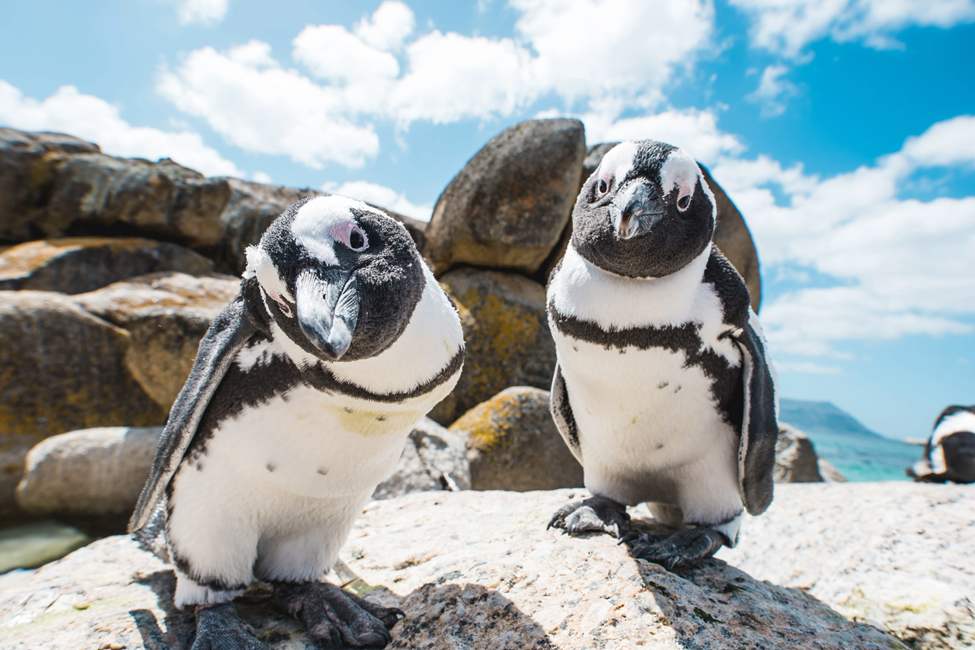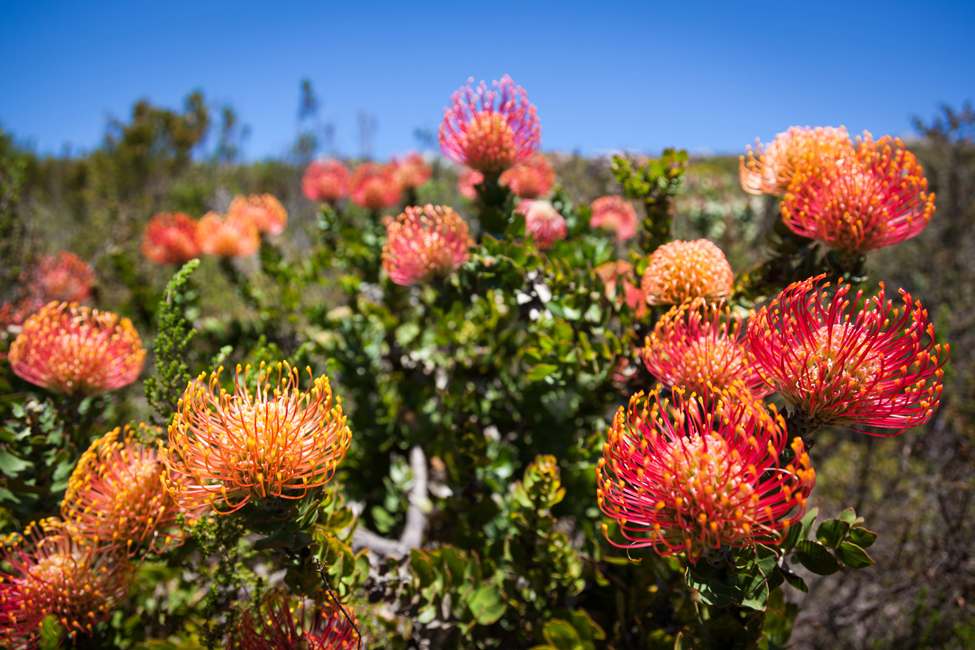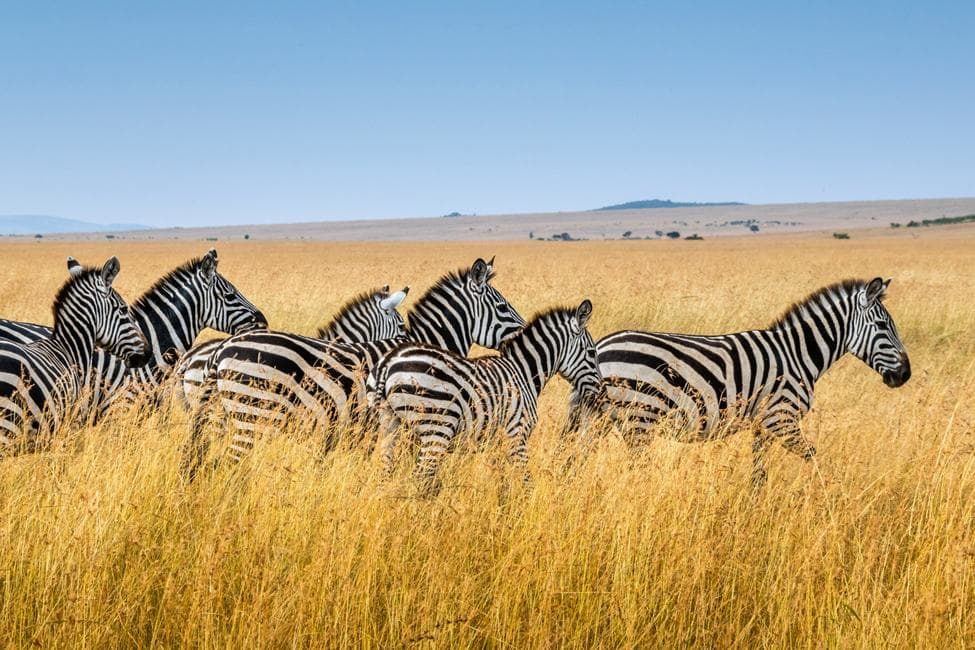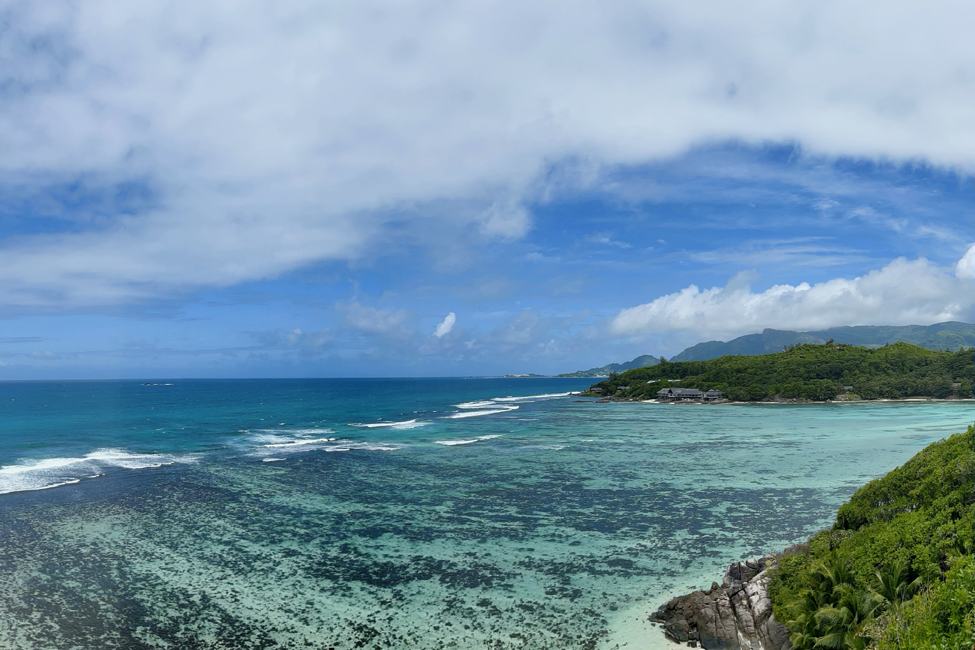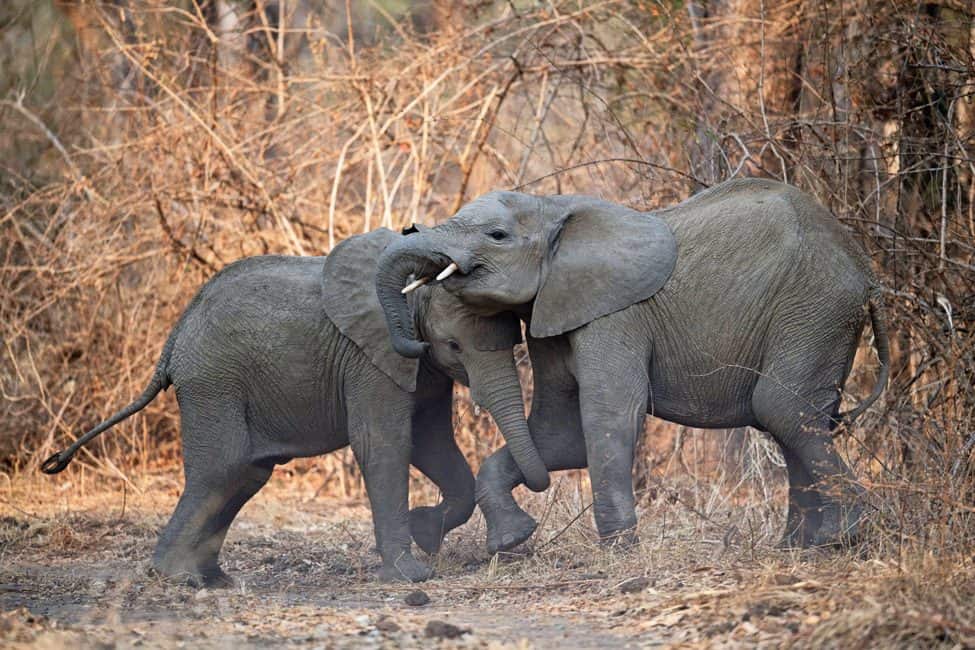Photo courtesy of South Africa Tourism.
Explore Humanity’s Roots at the Cradle of Humankind
In the world of archaeology, one of the most exciting spots on the planet is the Cradle of Humankind. Less than an hour from Johannesburg, South Africa, this 180-square-mile complex of caves is one of the world’s most prolific sources of human fossils. Here, scientists have found remains of many extinct hominins—species closely related to modern humans. Some hominin fossils found here date back as far as 4 million years.
Africa abounds with important fossil sites telling the story of early humanity. Besides South Africa, countries known for their hominin fossils include Tanzania, Kenya, and Namibia.
The Cradle of Humankind was declared a World Heritage Site by UNESCO in 1999. In this post, we outline some of its best highlights for visitors.
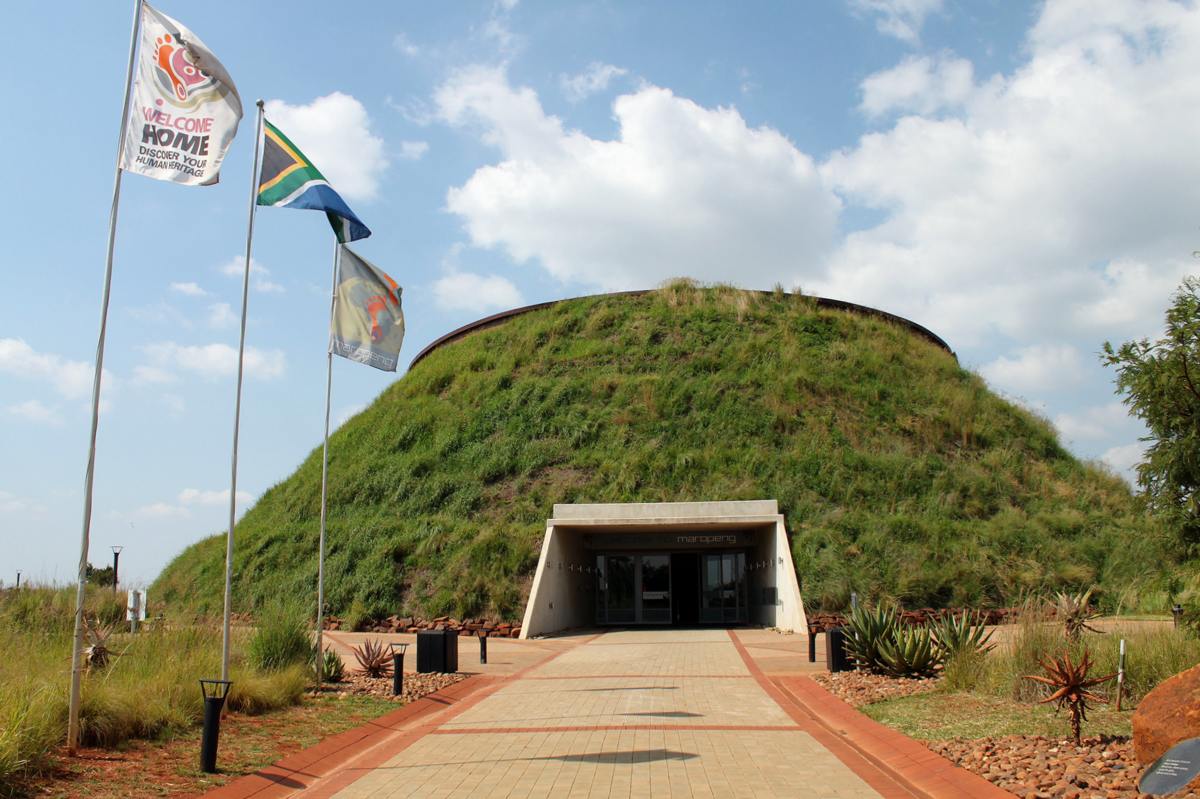
The Maropeng Visitor Centre replicates an ancient burial mound. Photo by Flowcomm.
Maropeng Visitor Centre
Every tour of the Cradle of Humankind should start at the award-winning Maropeng Visitor Centre. Your journey back in time begins at the front door. Move through a sunken marketplace where hundreds of Stone Age tools were found during excavations. Then descend to an underground lake for a short boat ride that brings the story of evolution to life.
Later, as you walk through the museum, you will learn about the hominin species found in Sterkfontein. Full-scale models show what they looked like and how they may have lived. Fossil exhibits let you compare differences and similarities among species for yourself.
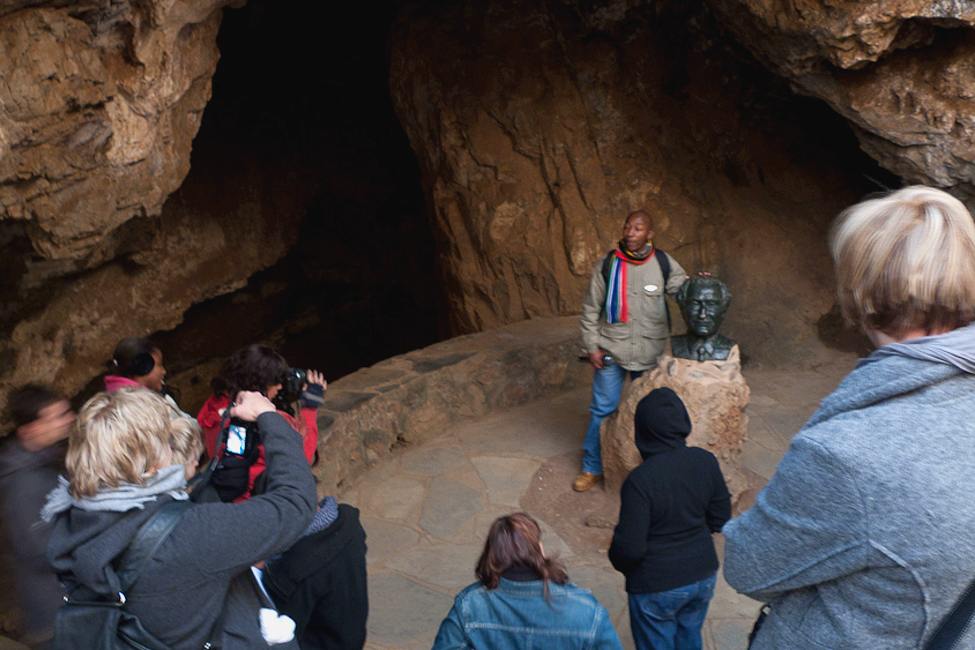
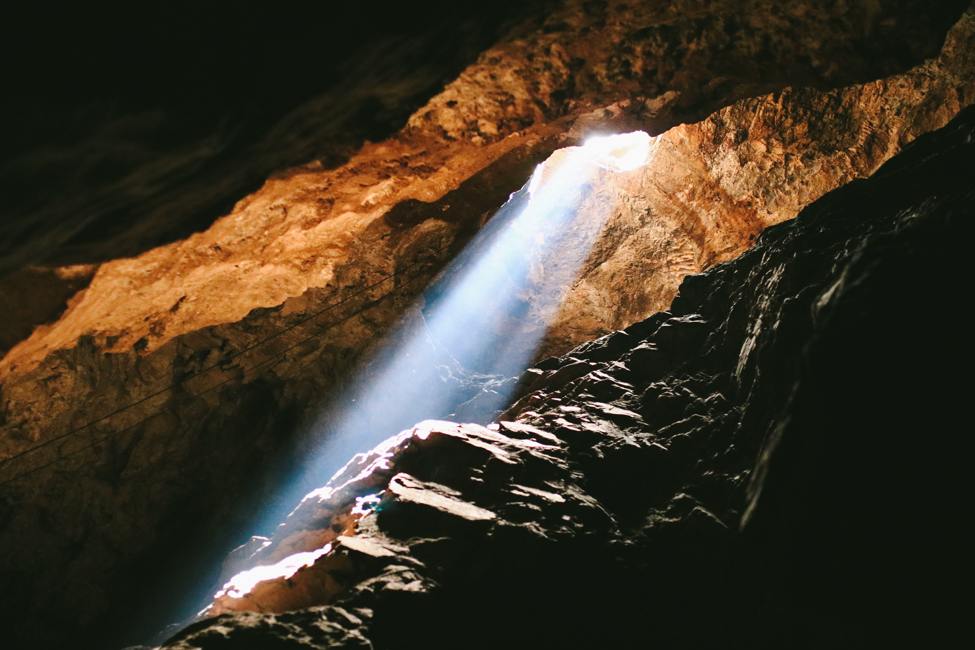
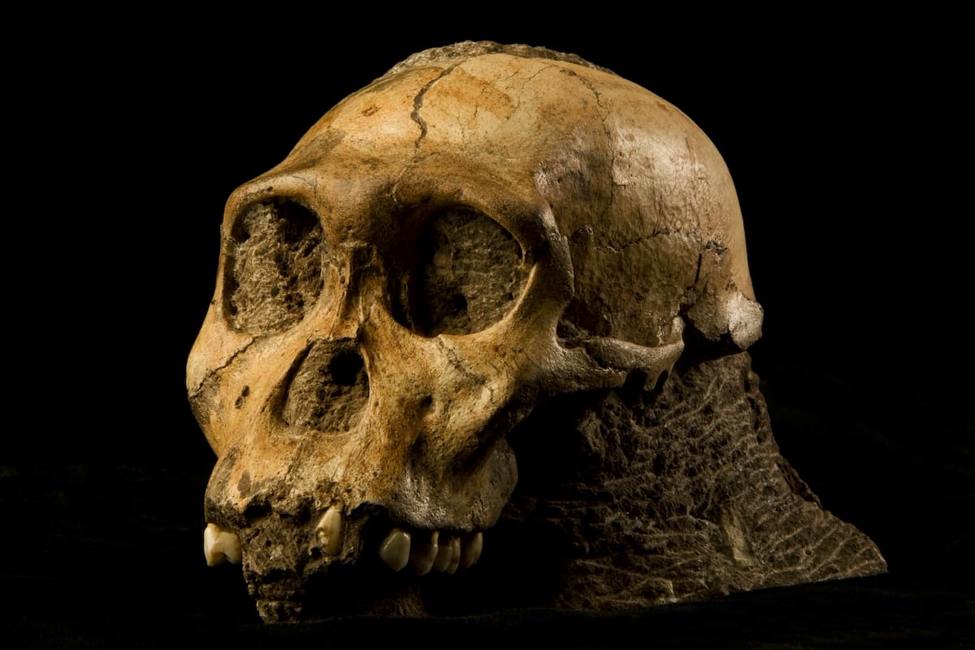
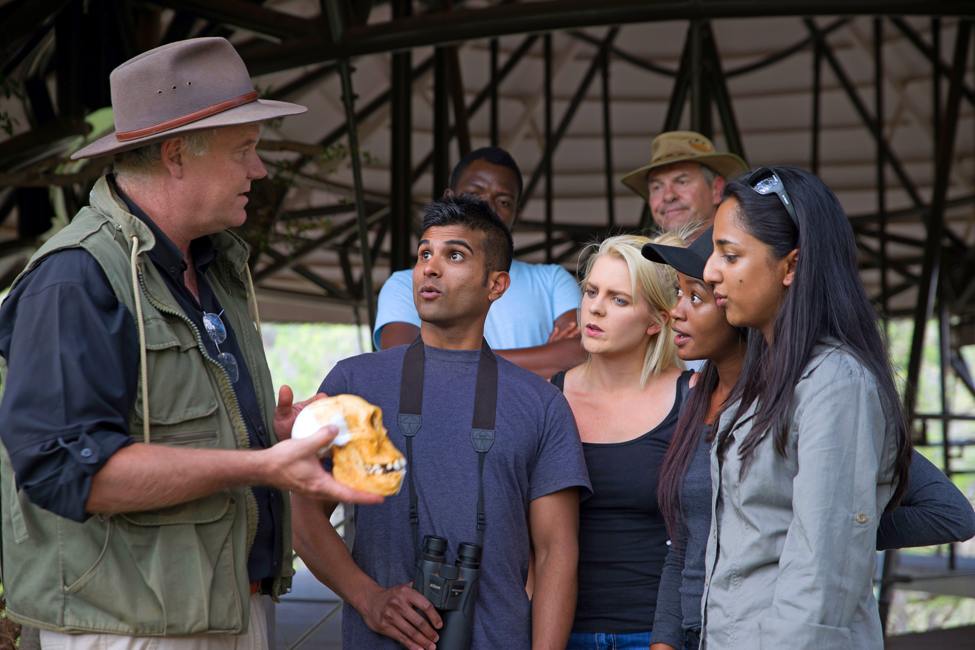
A tour group at Sterkfontein admires a statue of Phillip Tobias, a scholar and anti-Apartheid activist who identified the cave system as an important fossil site (Flowcomm). A shaft of sunlight illuminates Sterkfontein Cave. Learn about Australopithecus sediba at Maropeng (Brent Eloff, University of the Witwatersrand). Professor Lee Berger explains fossil findings to a group outside Malapa Cave (South Africa Tourism).
The Caves of the Cradle of Humankind
Why is the Cradle of Humankind home to so many fossils? The caves protect fossils from the weather, helping to preserve them. Here, we list some of the best caves to visit at the Cradle of Humankind.
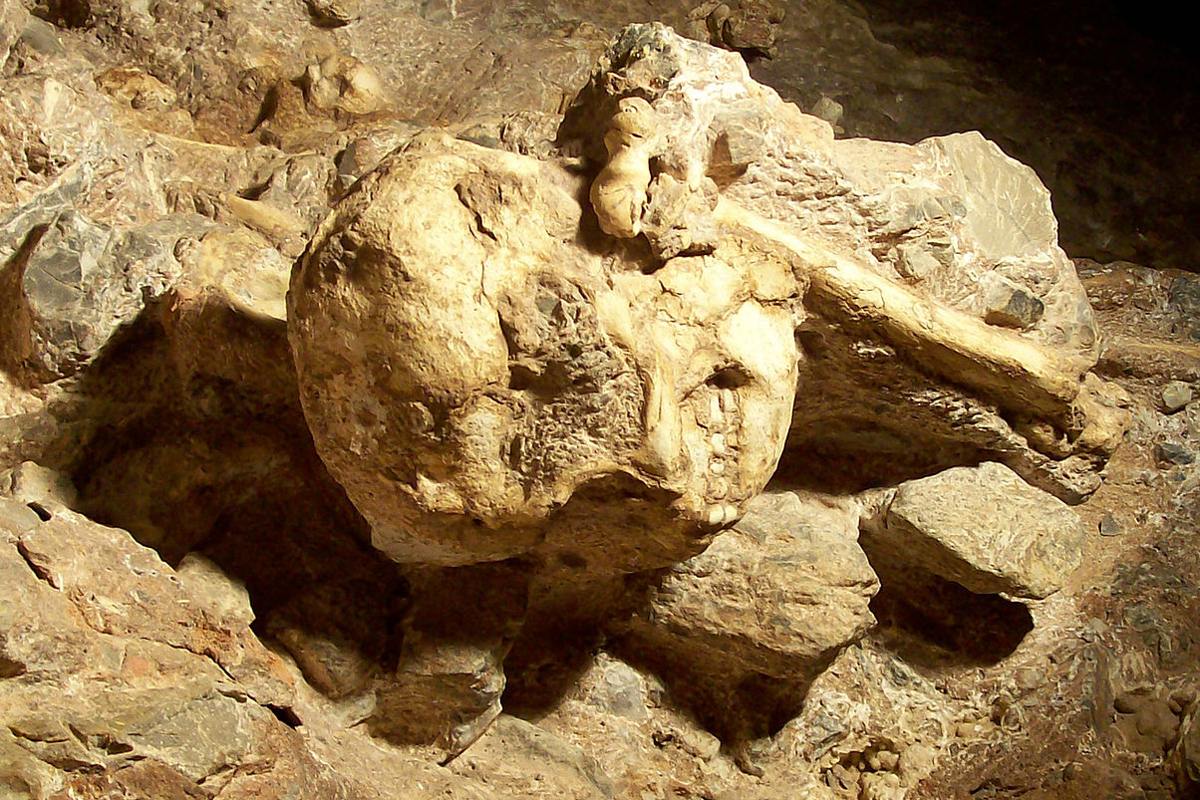
The Australopithecus skeleton “Little Foot” was found in Sterkfontein Cave and is estimated to be 2.2 to 3.5 million years old. Its foot shape indicates the ability to walk upright. Photo by V. Mourre.
Sterkfontein
Sterkfontein Cave was the source of more than a third of early hominin fossils found before 2010. The cave is open to the public on most days. Park rangers lead tours and explain the cave’s history and geology. You will see areas where important fossil discoveries have been made.
Sterkfontein was mined for limestone from the late 1800s. Miners often found fossils of plants and animals, such as fossilized baboon skulls. When faculty at nearby University of the Witwatersrand heard about these fossils in the 1930s, they began exploring Sterkfontein. The result? They found many fossils of Australopithecus africanus, a possible human ancestor that lived around 2 to 3.7 million years ago.
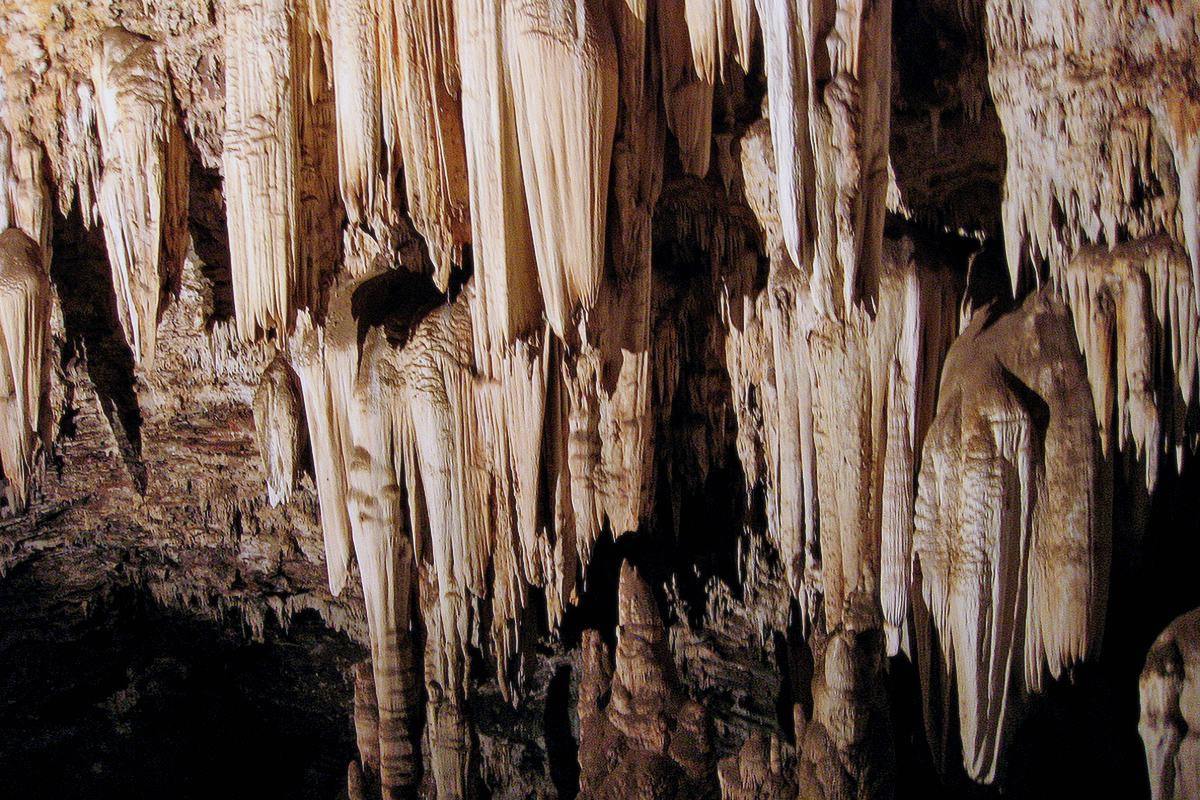
Stalactites hang from the ceiling of the Wonder Cave at Kromdraai. Photo by Bothar.
Kromdraai
Kromdraai is another important cave system in the Cradle of Humankind. Kromdraai came to the attention of archaeologists in 1938, when a local boy found a fossil later identified as an Australopithecus robustus jaw. This species represents a branch of the human family tree that eventually went extinct. Studying it provides archaeologists and biologists with important information about how species evolve and differentiate.
Kromdraai was once a gold mine. Visitors can tour the old gold mine, which dates back to 1885. The Wonder Cave—South Africa’s third largest cave chamber—is also a popular destination. It has stalactites and stalagmites up to 50 feet long.

This Australopithecus robustus skull was discovered in Swartkrans cave system and is estimated to be 1.8 million years old. Photo by José Braga and Didier Descouens.
Swartkrans
In 1949, scholars made an exciting discovery at Swartkrans: Homo ergaster, a direct ancestor of modern humans.
Swartkrans also shows evidence that human ancestors learned how to control and use fire about 1 million years ago.
Swartkrans is usually closed to visitors. However, it is possible to arrange tours for small groups at certain times of year. These tours are led by a researcher working at the site. It’s a one-of-a-kind experience!
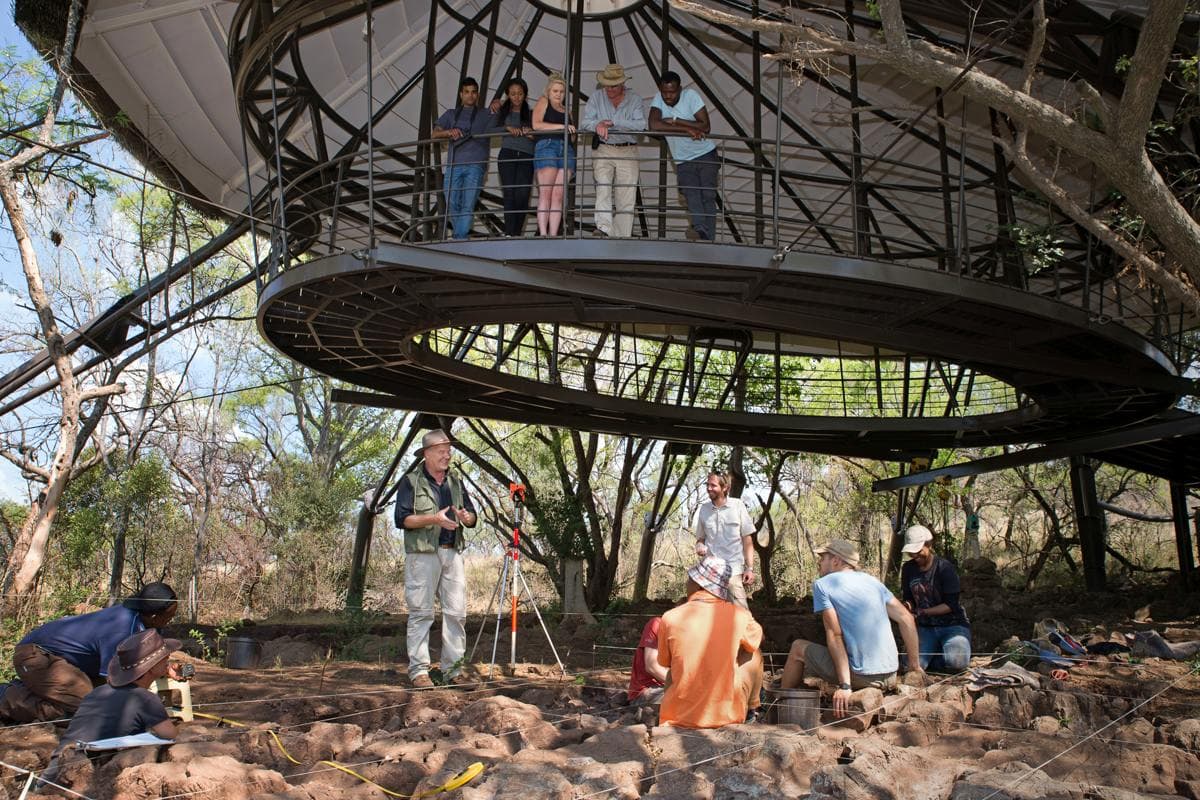
A raised platform at Malapa Cave allows visitors to look down on the excavation site. Photo by South African Tourism.
Malapa and Gladysvale
In 2008, a nine-year-old named Matthew found an unusual fossil in the Cradle of Humankind’s Malapa Cave. His father was paleoanthropologist Lee Berger, whose team figured out the fossil belonged to a previously unknown species. They named the species Australopithecus sediba. It lived 2.36 million years ago and may be an ancestor to modern humans.
Nearby Gladysvale Cave is also a productive fossil site. Teams have found more than 38,000 fossils there since 1991, including the skull of a giant hyena and many Australopithecus africanus bones.
Since these caves are active dig sites, visits are limited. However, safari-goers can see them as part of a tour of the John Nash and Malapa Nature Reserves, where they are located. The half-day tour includes a game drive with stops at each of the caves.
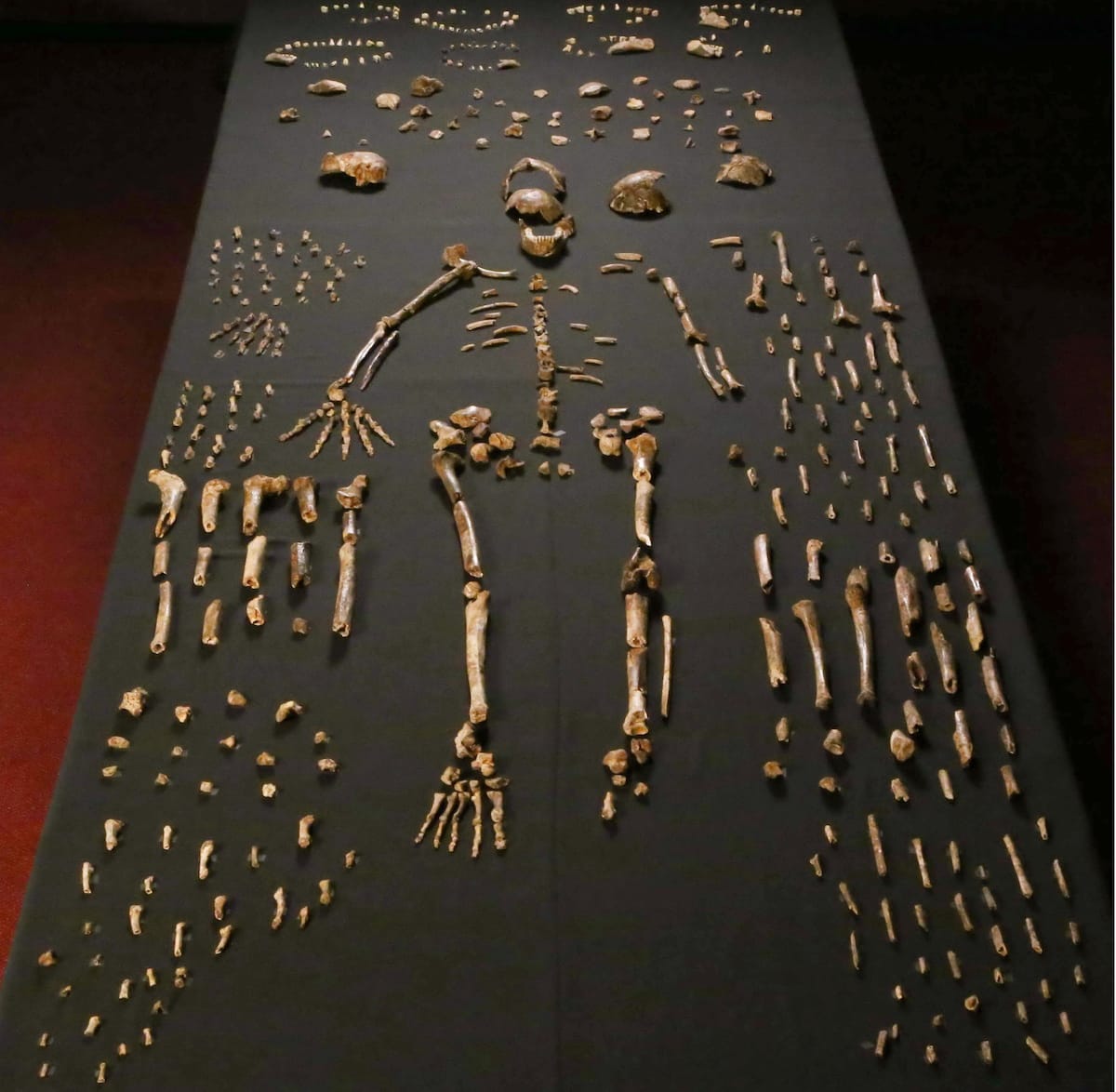
Homo naledi skeletal specimens were found in the Rising Star cave system. Photo by Lee Berger research team, University of the Witwatersrand.
Rising Star
The Rising Star cave system is just half a mile southwest of Swartkrans. It made international headlines in 2015 after a six-woman international team dug up a new species of human relative, Homo naledi.
The Rising Star cave system is open only to experienced cavers. Why? It has extremely narrow passages that most adults cannot squeeze through. But you can still enjoy the view from outside!
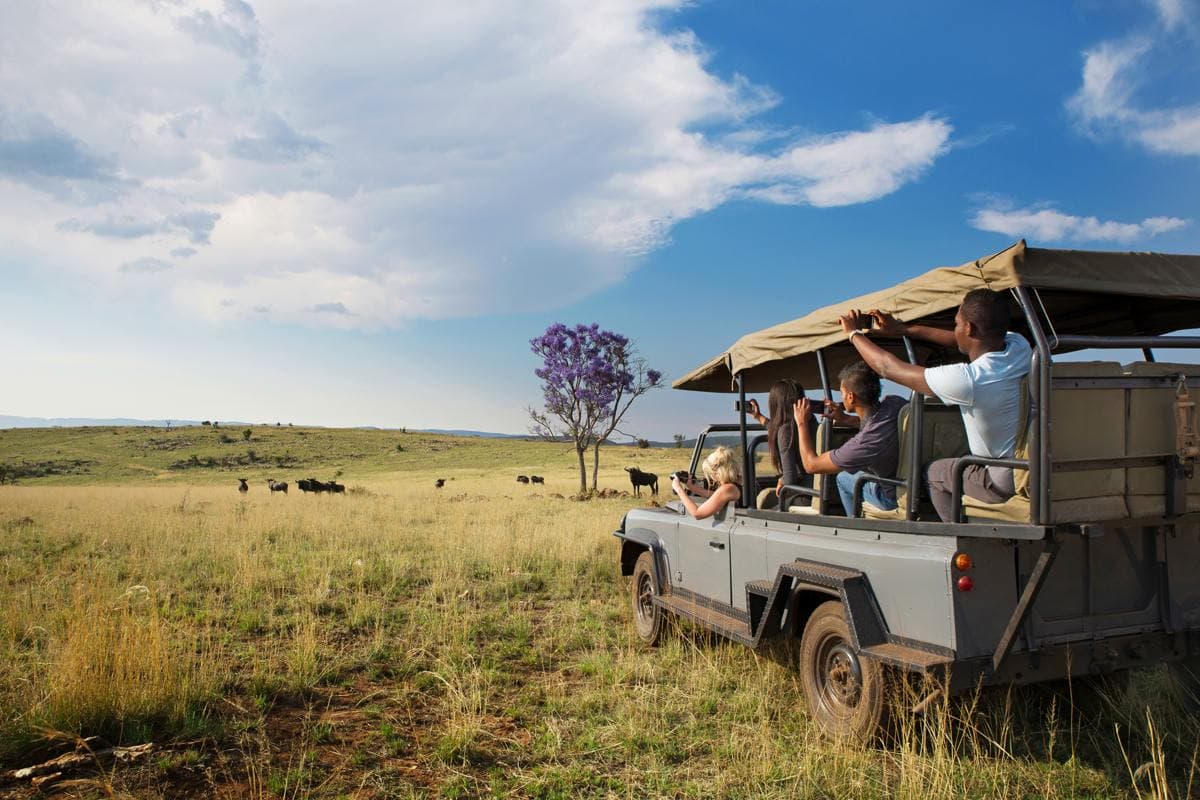
Travelers enjoy a game drive at the Cradle of Humankind. Photo by South African Tourism.
Visiting the Cradle of Humankind
A visit to the Cradle of Humankind can easily be included in a South African safari, whether you are driving yourself or traveling with a guide.
The Cradle of Humankind is located in Gauteng province, which is also home to many nature reserves. Here you may see cheetahs, elephants, white rhinos, giraffes, zebras, wildebeests, impalas, waterbucks, jackals, vervet monkeys, hyenas, leopards, and more. You can also enjoy the scenery with game drive or hot air balloon rides.
Are you ready to explore humanity’s roots? Contact Ujuzi to learn more about archaeological safaris in Africa.
Explore South Africa on These Safaris
Sign up for the Ujuzi Newsletter!
From top travel tips to innovative safaris and conservation movement, get inspired to plan your next African safari!
By submitting this form, you are consenting to receive marketing emails from: . You can revoke your consent to receive emails at any time by using the SafeUnsubscribe® link, found at the bottom of every email. Emails are serviced by Constant Contact


